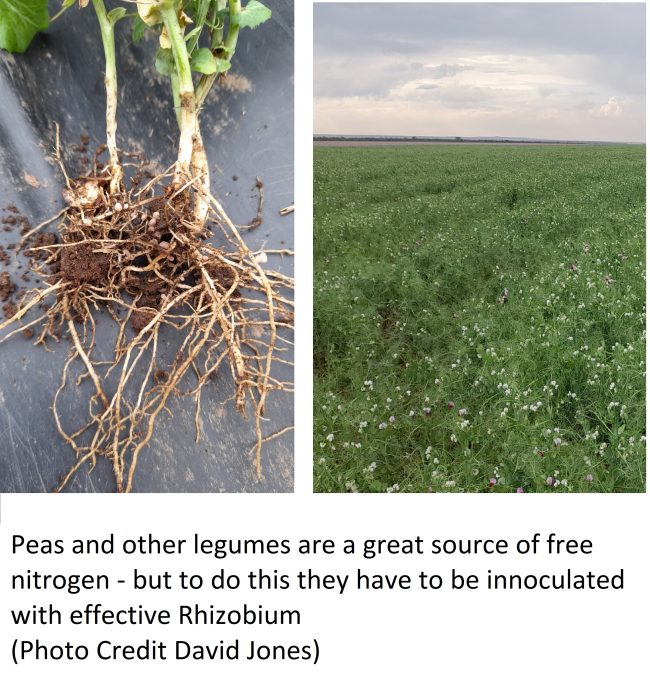
The ABC of cover crops
By Ruth Vaughan
In my last article we delt with the many benefits of cover crops and how they can really help improve soil health, soil structure, nutrient availability (especially phosphorous), and water infiltration and moisture holding capacity. These are some of the most important yield destroyers in African soils. Cover cropping, if done properly can really make a difference to a farmers’ bottom line, at the same time as helping the planet! In over 50% of the cases that I have visited, a decent cover crop has paid for itself (and more) in the returns on the next crop. Indeed, as I write this, I am pulling up my lawn to plant a season of daikon radish and lucerne, to soften my soil, and remove the soil compaction (and feed my pigs). We eagerly wait for the rains to start.
What are you trying to achieve with your cover crop?
Improved Soil Fertility – cover crops grown to improve soil fertility are known as green manure crops.
Cover crops with shallow fibrous root systems, like grasses, build soil aggregation and structure in the topsoil, reduce surface capping and compaction, and improve water infiltration.
Cover crops with deep tap roots break up compacted layers and bring subsoil nutrients up to the topsoil. Deep rooted crops are also effective at bringing leached fertilisers up to the topsoil.
Some cover crops are mycorrhizal, like sunflower. This means they form a symbiotic relationship with mycorrhiza fungi. Mycorrhiza is very effective at solubilizing phosphorous and other nutrients and binding them in an organic form which is much more available to the cover crop and following crops. In addition, mycorrhiza take the sugars formed from atmospheric carbon dioxide via photosynthesis of the cover crop and produce chitin and glomalin, one of the most efficient systems of sequestering stable soil carbon and incredibly effective at improving soil aggregation and moisture holding capacity. Years of ploughing the soil, monocropping and applying herbicides and fungicides means that many soils lack this essential soil organism.
For improving soil carbon quickly concentrate on cover crops that produce a huge dense volume of roots. Most effective here is a cover crop mix of 3-5 different species that fill the whole soil profile. When terminating the cover crop keep the roots in place. Roots are much more effective at building organic matter than the above ground biomass. And as the roots decay they create soil channels that water and proceeding crop roots can follow, deep down into the soil.

Nitrogen scavenging cover crops are useful if you have a high soluble nitrogen level in your soil (for e.g., from over application of manures or fertiliser or a failed crop), that you want to protect from leaching banking it as a slow-release organic nitrogen source. Here you need a quick crop that absorbs nitrogen fast. (Available nitrogen can be measured at CropNuts!). Leguminous crops fix nitrogen in the soil. Yes, you got it, slow-release organic nitrogen for free!
How can you fit the cover crop into your rotation and what cover crop is suitable for your climate and rainfall? Consider your rainfall, crop type and when you are going to plant. For the long rains – there is more water and time to bring the crop up. In the short rains a quicker more drought tolerant cover crop is better. For an annual crop aim to establish it in the rainy season. Lower altitudes tend to be hotter, and heat tolerant crops are indicated, at higher altitudes cool season plants grow better. How will you kill the cover crop and incorporate it into the soil? Options include mowing, rolling, ploughing in, herbicides, grazing. Do you have the right equipment for the cover crop?
Will the cover crop turn into a volunteer weed. Will the host crop break any pest, disease, or nematode cycles that you encounter in your main crops, or break the weed cycle? Broadleaf crops allow you to use herbicides for grasses, grasses allow you to use herbicides for broadleaf crops. Fast growing, allelopathic cover crops with a dense canopy outcompete and suppress weeds.
Barley – good for drought, heat, saline and alkaline soils. Not suitable for wet acidic soils. Good weed suppressor, N scavenger, forage production, nurse crop for legumes. Reduces surface compaction, improves organic matter and is good grazing. Not so good as a break crop for small grain production. Cow peas – needs heat to grow well, and once established is very heat and drought tolerant. Has a deep tap root, tolerates low soil fertility, grows fast, weed suppresser, good biomass and forage production, high Nitrogen fixation (inoculate with the right Rhizobium). Nectary for beneficial insects. Some suppression of problem nematodes. Low volunteer weed risk.
Crimson Clover – a short, cool season, shade tolerant annual. Good forage producer and N-fixer (inoculate with the right Rhizobium), mixes well with rye and barley. Good for pollinators, host to some problem nematodes. Larger seeded and better plant establishment than some clovers. Slower breakdown and N release than vetch.

Mustard – contains bio toxic compounds and commonly used for insect, disease and nematode suppression, fast growing and great for N scavenging and weed suppression. Reduces mycorrhiza. Don’t let it seed. Good in a cover crop mix.
Oats – annual cool season crop, good N scavenging and forage, excellent at reducing surface compaction and broadleaf weed suppression, flood tolerant.
Forage radish (Daikon or tillage radish) – fast growing and quick to establish with good soil fertility and soil moisture, N scavenger, weed suppressor, releases N fast from residue, great for penetrating plough pans, if allowed to flower feeds pollinators.
Rapeseed (Canola) – great break crop for small grain farms, can double up as commercial crop, needs adequate soil fertility and moisture. N scavenger, good biomass, forage, deep rooted tap root, weed suppression, flowers good for pollinators. Host sclerotia, use caution when planting before legumes. Excellent plough pan penetration. Can become a volunteer weed if not controlled properly.
Pearl Millet – fast growing, does well in hot weather, regrowth (long term) potential if grazed or mowed high, good forage (but can accumulate nitrate), does better in acid, droughty soils. Good in a cowpea, sunn hemp, sunflower mix. Good smother crop, less biomass potential than sorghum.
Sorghum-Sudan grass (Sudex). A fast grower with a big biomass potential (6 to Peas and other legumes are agreat source of free nitrogen- but to do this they have to be innoculated with effective Rhizobium, needs lots of N, an excellent subsoiler with thick roots, regrows well after mowing/grazing, good weed suppressor due to fast growth and allelopathy (which might affect small seed germination n following crop). Good in cow pea sun hemp mix. Prussic acid can be a problem in forage. This ticks all the boxes for plough pan and sub-surface compaction, organic matter build up, soil aggregation, N scavenging, and long-lasting residue.
Sunflower – upright broadleaf annual, with good heat and drought tolerance once established. Flowers are great for people and pollinators, good grain break crop, can be a commercial crop, medium weed suppression, good N scavenging, deep branched tap root that pulls up deep nutrients (but not so good for subsoiling), great in cover crop mixes, slow long-lasting residue. Brilliant at encouraging mycorrhiza.
Sunn hemp – tall tropical legume, does not like cold soils, large N fixation potential and good for nematode (especially root knot nematode) and disease suppression, cross inoculates with cow pea rhizobium, many different cultivars suitable for different climates and soil, some contain alkaloids that are poisonous to life stock, medium plough pan/soil compaction/organic matter/ soil aggregation but very tolerant of heat, drought and low fertility soils. Flowers feed pollinators.
Hairy vetch – cool season annual, reliable with fast growth and excellent N fixation (cross inoculates with pea rhizobium), long growing window, medium improvement on soil health, mainly grown as a good fast release source of N, can be a problem nematode host, and great for pollinators.
Alfalfa – lucerne – a perennial broadleaf – so consider for 2-3 year break crop, likes good soil fertility and neutral to high pH, difficult to establish but good drought tolerance when established, excellent N fixation (cross inoculates with clover Rhizobium). Expensive seed so a longer growing window required to justify it, but a very useful cut and dry fodder crop, very deep tap root to access deep nutrients, consider planting with a nurse crop like oats/barley to establish. Medium to good improvement on compaction, organic matter and soil aggregation.
Annual Rye Grass -not good in heat or drought, great N scavenger and top-quality forage, dense fibrous root system, topsoil conditioner, good weed suppression, tolerates shade and wet soils, becomes a volunteer weed very fast – keep an eye on it. I planted some 10 years ago, and I am still trying to get rid of it.
These are just a few of the vast selection of cover crops we can plant. If in doubt do some trials and see what grows best on your farm. If in doubt, plant a big mix of seeds and let the plants decide. There is an abundance of local African Plant species, some commonly known as weeds, which have their place in our farming systems and would make excellent cover crops ….
Finding seed is often a problem, talk to your local agrovet, visit our on-line farm inputs directory (https://shambaza. com/), grow your own, or write to us. I got a lot of very interesting cover crop seeds at the KALRO stand at a local horticultural show. Thank you for all the emails that we received from the last article; I hope I have answered a lot your questions. If you would like to know more about healthy soils, please write to us at support@cropnuts.com. We value your input


